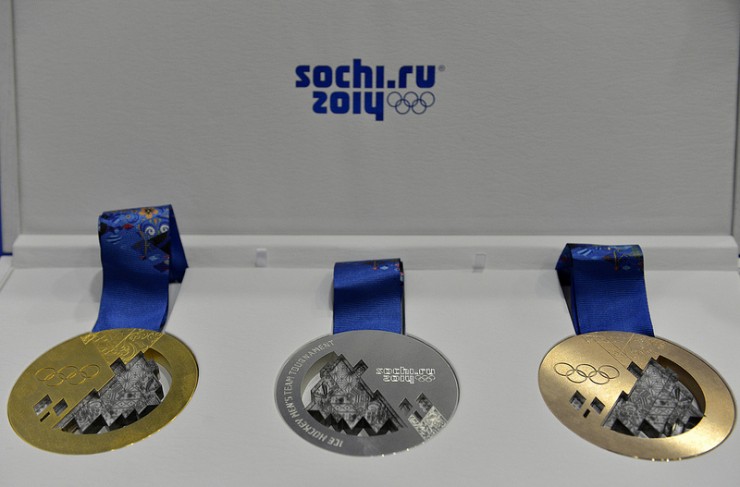
In Saint Petersburg, Russia, on Thursday, the Sochi Organizing Committee unveiled the medals that will grace the winner’s necks at the upcoming 2014 Olympics. Reactions have been mixed, but the FasterSkier staff generally conclude that they are beautiful.
We also can’t help but take the opportunity to predict who might take home some of the hardware come February. Anything can happen over the next seven months before the Games kick off, and we don’t want to get too ahead of ourselves, but it’s not inconceivable that a few medals could be coming back to the U.S. and Canada from the nordic disciplines next winter.
And what medals they are: the large, circular design plays with positive and negative space, with a cutout section featuring a polycarbonate “patchwork” of designs from different regions and cultures of Russia. The gold, silver, and bronze portions themselves were described as tributes to the Sochi landscape of mountains and sunlight, and the coast of the Black Sea.
(The goodwill and excitement from the unveiling ceremony was marred somewhat by an announcement from Boris Nemtsov, a former deputy prime minister who is now an opposition figure and critic of the Kremlin. He estimated that as much as $30 billion of cost overruns for the Olympics could be due to corruption and urged Russian ministries to investigate fully, according to the Associated Press.)
So how many of these gorgeous creations are likely to come back to North America when all is said and done? Before we break it down by event, let’s reflect back on four years ago. In Vancouver, women’s ski jumping was not on the schedule, the U.S. women’s cross country team wasn’t as deep, Kikkan Randall hadn’t yet won a crystal globe, the U.S. men’s nordic combined team had never won an Olympic medal, Jean Philippe Le Guellec hadn’t became the first Canadian man to win a biathlon World Cup and Tim Burke hadn’t became the first American to stand on the World Championships podium in decades. It’s been said many times already, but we’ll say it again: we’ve come a long way.
Let’s cut to the chase: by our calculations, it wouldn’t be at all surprising if four medals came back to North America. If everything went perfectly? North America could be seeing as many as eleven of those beauties flying back across the Atlantic to inspire many more generations of nordic enthusiasts. To understand how this might happen, let’s look at each event.
Opening Weekend
After Opening Ceremonies on Friday, February 7, the first weekend will be an exciting kickoff for nordic sports: there are two days of ski racing, with the 15 k and 30 k skiathlons, and two of biathlon, with the 10 and 7.5 k sprints. Those take place at the Laura venue, but over at RusSki Gorki men’s normal hill jumping will also be contested. Likelihood of North American medals there: zilch.

In the skiathlons, there’s potential. They certainly aren’t the events where Americans or Canadians are considered favorites, yet there are definite possibilities. The Canadian men probably have the best shot of taking home a medal. Devon Kershaw, Alex Harvey, Ivan Babikov, or Lenny Valjas could conceivably all be in the mix late in the race, and Kershaw, Harvey, and Valjas have all demonstrated strong finishing kicks at the end of long races when it counts. The U.S. women are slightly less likely to score, but Liz Stephen or any of her teammates have an outside shot.
On the biathlon side of things, Canada’s Jean Phillipe Le Guellec or Americans Tim Burke or Lowell Bailey could all conceivably be in the mix. Le Guellec was sixth in this event in Vancouver, and took home his first World Cup win in the discipline this season. Burke had a podium near-miss this season in the sprint as well, although it doesn’t seem to be his best discipline.
Medal haul: 0-1.
Week One, Early
For most sports, back to back medals events on the opening weekend means a break is in the schedule. For biathlon, that’s not true. On Monday and Tuesday the racers head straight into the 12.5 and 10 k pursuit races, based on the time gaps from the sprint results. Here, again, the three North American men have a shot, and all have proved that they have the ability to gain ground in the pursuit. In fact, Bailey and Le Guellec were two of the biggest movers in this season’s Nove Mesto championship pursuit. Even if they struggle in the sprint, the trio could easily hit the top ten or fifteen; with a good sprint, anything is possible.
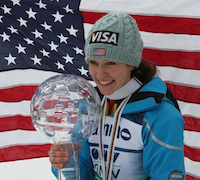
But the biggest day for North American nordic sports at the Games might easily come on Tuesday, which will feature not only the women’s biathlon pursuit but both the men’s and women’s cross country sprints and the women’s normal hill for ski jumping. Based on Sarah Hendrickson’s domination of the women’s ski jumping scene this winter, and the fact that plenty of other U.S. ladies have had success as well, such as former World Champ Lindsey Van, a medal seems inevitable – hopefully, a gold one, as women’s ski jumping finally wins its long-fought battle to make it onto the Olympic program.
In the cross country sprints, fireworks are most likely to come from the women, too. The sprints are skating, which is a perfect fit for defending two-time Sprint Cup champion Kikkan Randall of the U.S. Of course, sprinting is notoriously risky, as was seen at the 2011 World Championships in Oslo where Randall was expected to at least make the final but was tripped up in a collision with a Swedish racer.
So it’s tough to make guarantees in this discipline. But Randall is a hands-down favorite for a medal, at this point even for a gold one. And, despite her off-season in 2012/13, Canada’s Chandra Crawford could be figured in the final as well, as could the several other North Americans who have appeared in World Cup finals and semifinals: Dasha Gaiazova and Perianne Jones of Canada, and Ida Sargent, Jessie Diggins, Sadie Bjornsen of the U.S. Anything can happen in sprinting, so all of these women could make the semifinals, or none of them could.
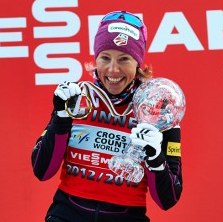
In the men’s sprints, look for Andy Newell in the final. After all, he qualified for the heats in every single sprint of the 2013 World Cup season, and enough finals to land him in fifth place in the Sprint Cup. But also look for the Canadian men. Although they were certainly less consistent in their sprinting prowess – none are specialists to Newell’s degree, and had other races to focus on – they have the chops, and Alex Harvey won the bronze medal at 2013 World Championships. He or teammates Kershaw or Valjas could also appear in the final or on the podium.
Biathletes, skiers, and jumpers will have a break on Wednesday as the combiners take over with the normal hill competition. At this point it’s unclear whether the American heroes of the Vancouver Games have the mettle to pick up more medals; Billy Demong, for instance, is 33 years old and didn’t make the top ten in any World Cups this season. But he’s a canny competitor and did well in some relays. Instead, the mantle is more likely to be carried by Bryan and Taylor Fletcher. Bryan had the team’s lone individual podium this season and both had several just-missed-it performances. With the incredible peaking ability the combiners demonstrated in Vancouver, it’s possible one of them will earn a medal.
Medal haul: 2-4.
Week Two, Extended Weekend
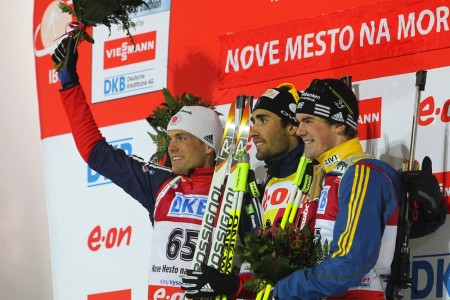
As the weekend gears up, both biathlon and skiing will feature individual races on Thursday and Friday. In biathlon, it’s probably North America’s best hope for a medal. Tim Burke won silver in the 20 k at this year’s World Championships, and also landed third in the discipline rankings. On the women’s side, Susan Dunklee placed fifth in the event at 2012 World Championships. She’s far from a medal bet at this point, but she, Burke, and Annelies Cook all had excellent performances at the World Cup tests events at the Laura venue. It could be an exciting weekend for U.S. biathlon, which is the only remaining winter Olympic sport where the U.S. has never won a medal.
The 10/15 k classic individual races will be a bit dicier for the skiers. In general, interval-start is not where North America shines. It seems likely that there will be at least a few great performances – by no means a surprise to see North Americans hit the top ten. But a medal? It seems like a stretch, especially since the more all-around athletes may not even start.
Then, the weekend itself. Saturday will feature the men’s normal hill jumping event, another throwaway for North American hopes. But it will also see the women’s 4 x 5 k cross country relay, where the American women have a real chance for a medal. They already have a World Cup podium, and finished fourth at World Championships. It will definitely be a focus for the team.
Sunday brings the men’s 4 x 10 k relay, where the U.S. will likely be out of the picture but Canada is almost sure to be in the lead pack at some point in the race – for how long, who knows. The relay has not been a huge focus for the team in World Cup racing in the past few years, so it will be interesting to see how things come together.
Finally, the men’s biathlon field will race 15 k in the mass start, arguably the most exciting race format. Because the field is limited to just 30 racers, it’s hard to know how many North Americans will even get to put on a bib. But based on the past two seasons, it seems fair to guess that Burke and Bailey will be out there working and, it seems, probably making an appearance at the front. Can the pull through all the way to the finish? Who knows.
Medal haul: 0-2.
Week Two
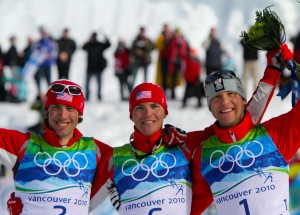
At this point in the Olympics, recovery will become essential. Some skiers and biathletes will have already competed in four events. On Monday, the biathlon women will take to the mats for their own mass start. This season, Rosanna Crawford made a single mass start appearance for Canada, finishing 22nd, and no Americans made the cut. Medals here are unlikely, as they will be that night at the men’s large hill ski jumping competition.
Tuesday and Thursday feature nordic combined, with the large hill and team large hill formats. There’s an outside chance of a medal in each. The United States took bronze in the event four-man event at 2013 World Championships, and silver back at the 2010 Olympics. Nothing is guaranteed, but they seem to have the capacity to do it again.
In between the two days of nordic combined are more team events. Biathlon will have the mixed relay on Wendesday, where the U.S. is capable of a medal-caliber performance but has not delivered in any World Cup or World Championship races so far.
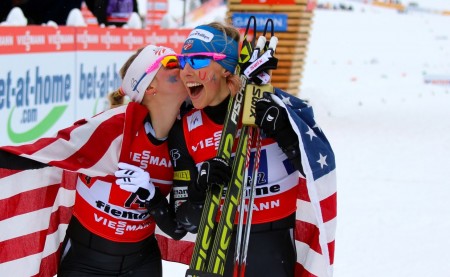
Both the men’s and women’s team sprints are also on Wednesday, and for cross country skiers it could be a bonanza. The U.S. duo of Kikkan Randall and Jessie Diggins are defending World Champions; the Canadian pair of Devon Kershaw and Alex Harvey won the title in the edition before that. But each team is so strong in sprinting that it’s not even certain that those four individuals will be the ones to earn starts. To put it bluntly, it would be a shock if between the two of them, at least one set of medals didn’t head back across the Atlantic – and the possibility of double gold, though unlikely given the ups and downs of sprint racing, is what North American ski dreams are made of.
The complementary teams, though – the U.S. men and the Canadian women – certainly can’t be counted out. Canada will have to pick a team from the trio of Chandra Crawford, Dasha Gaiazova, and Perianne Jones, and the ladies have had their podium moments on the World Cup as well as disappointments. They should at least make the final. The American team is expected to be Andy Newell and Simi Hamilton, who have likewise had a variety of results. They, too, ought to make the final, especially in the Olympic format where each country is allowed only one team, unlike on the World Cup.
Medal haul: 2-3.
Last Chance Weekend
By the time the last weekend rolls around, jumping and combined will be finished. All that remain will be the most prestigious events for biathlon and skiing.
On Friday, biathlon will begin its final rundown with the women’s relay. Unfortunately, neither the U.S. nor Canada have the depth to figure at the front of the race. Come Saturday, however, the U.S. men may have a fighting chance. They have had top-six relay finishes in the past and are often in podium position at the halfway point. Perhaps Olympic courage and the thrill of the moment will finally send them towards a medal, although the competition will never be fiercer.
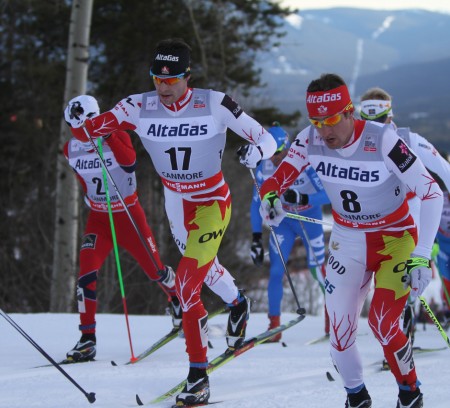
For skiing, the capstones will be the women’s 30 k skate on Saturday and the men’s 50 k skate on Sunday. The U.S. can pin its hopes on Liz Stephen, Noah Hoffman, and Kris Freeman. None are guarantees, but it’s possible – just possible – that they could land a bronze. None lack the guts, and the tough courses suit Stephen and Hoffman’s light builds and high pain thresholds well. Both young racers have been on an upward trajectory, but they would need everything to go perfectly.
For Canada, as in several other races, it’s probably less a question of whether there will be a man at the front, but who. Ivan Babikov is strongest in skating and excels on the toughest of courses – and Laura is one tough venue. But Kershaw (if he gets over his 2013 slump) and Harvey could be in the mix too. It’s easy to forget, given the sprint World Championships medals Harvey has accumulated, that one of his first major appearances on the World Cup circuit was in the Holmenkollen 50 k. In Vancouver, Kershaw was fifth in the classic 50 k. Don’t count Canada out.
Medal haul: 1 (we’re overcome with the Olympic spirit: optimism).
Total haul: (0-1) + (2-4) + (0-2) + (2-3) + 1 = 4 to 11 medals
Chelsea Little
Chelsea Little is FasterSkier's Editor-At-Large. A former racer at Ford Sayre, Dartmouth College and the Craftsbury Green Racing Project, she is a PhD candidate in aquatic ecology in the @Altermatt_lab at Eawag, the Swiss Federal Institute of Aquatic Science and Technology in Zurich, Switzerland. You can follow her on twitter @ChelskiLittle.



